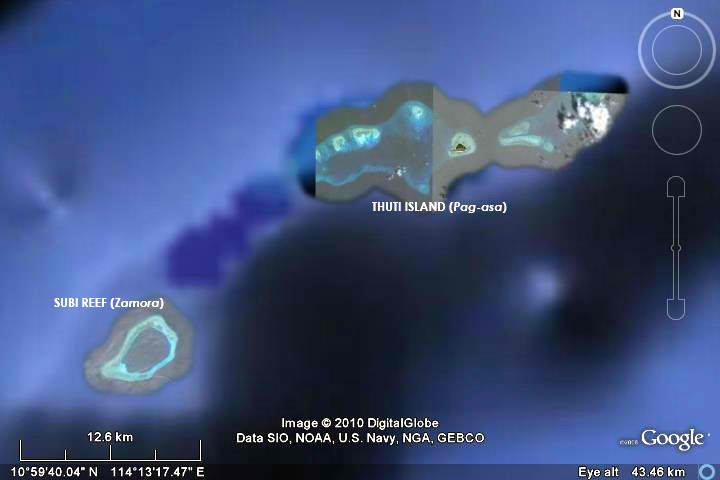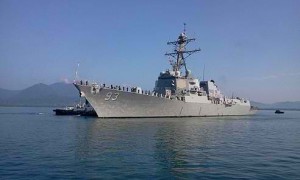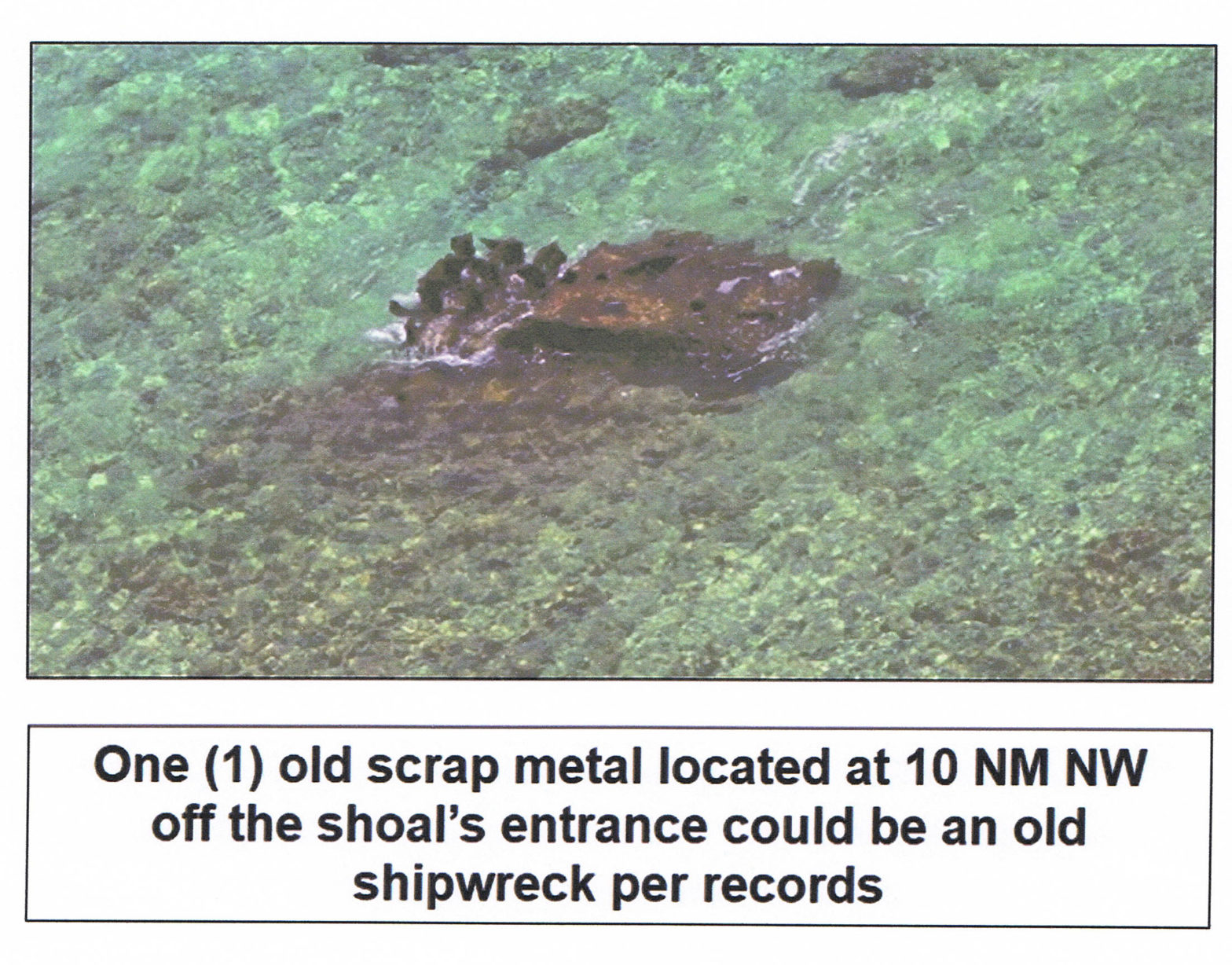By TESSA JAMANDRE
 CHINA has constructed a lighthouse on Subi Reef in the disputed areas in the South China Sea which Chinese troops are occupying but is being claimed by the Philippines and Vietnam.
CHINA has constructed a lighthouse on Subi Reef in the disputed areas in the South China Sea which Chinese troops are occupying but is being claimed by the Philippines and Vietnam.
Aerial shots taken in October by the Philippine Air Force on routine reconnaissance flights show the 20-by-20-meter structure complemented by parabolic antennas and domes on the reef, which the Philippine government calls “Zamora” and lies only 26 kilometers southwest of Pag-asa that is part of Kalayaan town.
The lighthouse is intended to expand and fortify China’s claim over the hotly contested Spratly group of islands, experts said.
Under international law, a lighthouse is a recognized base point from where a state can measure its maritime regimes, including territorial sea (12 nautical miles from the baseline), contiguous zone (24 nm), economic exclusive zone (200 nm), continental shelf (200 nm) and extended continental shelf (350nm).
Malacañang and the Department of Foreign Affairs declined to comment on the information when asked for their reaction. An official, who asked not to be named, said they would like to see first the published article.
“I think that should be resisted. That really goes against all understandings,” said former ambassador to Japan Domingo Siazon who was the foreign secretary in 1995 when the Philippines strongly protested the construction by China of military-type structures on Mischief Reef, 150 miles west of Palawan and 620 miles southeast of China.
The Philippines will have an opportunity to raise the issue when senior officials of the Association of Southeast Asian Nations and China meet at the joint working group level on Dec. 22-23 in Kunming City on the implementation of the 2002 Declaration on the Conduct of Parties in the South China Sea.
 Called “Zhubi Dao” by China and “Da Su Bi” by Vietnam, Subi Reef surrounds a huge lagoon. China had earlier constructed three-story buildings, wharfs and a helipad there.
Called “Zhubi Dao” by China and “Da Su Bi” by Vietnam, Subi Reef surrounds a huge lagoon. China had earlier constructed three-story buildings, wharfs and a helipad there.
Other Spratlys claimants have upgraded their facilities. Vietnam has two buildings and an airstrip on Southwest Cay (Dao Song Tu Tay in Vietnamese) that overlooks the Philippines’ Parola island (Northeast Cay).
Malaysia’s Pulau Layang-Layang or Swallow Reef is now being marketed for tourism. Development of the resort, which included a bay for yachts and windmills to generate power, was completed this year.
None of the nine islands occupied by the Philippines has a port facility, but it is part of the development plan of the Kalayaan local government for Pag-asa island. The airstrip on the Philippines’ Pag-asa island, the first landing facility to be built in the area, remains undeveloped.
“We are very eco-friendly,” a military official wryly remarked.
The Philippines occupies nine of the 53 islands it claims in the mineral-rich Spratlys chain in the South China Sea, which China claims wholly. Vietnam, Malaysia, Brunei and Taiwan have also staked their claims on some of the 160 islands.
Last month, an additional battalion of Marines was deployed to Palawan. The military is giving more attention to external mode or territorial defense now that the terrorist threat has been contained or is diminishing and peace talks with the communist insurgents are about to start.
Maj. Gen. Juancho Sabban, Armed Forces Western Command chief, said the force of choice for external defense is the Fleet Marine because it is highly mobile and can easily adapt to both land and sea environment.
“You know China would not have intruded into the Mischief Reef if they (the Philippine government) didn’t pull out the Marines there,” he said.
He recalled that following the people power revolution in 1986, the administration of Corazon Aquino pulled out all the Marines from Palawan, which is nearest to the Spratlys, and sent them to Tawi-Tawi and Sulu because of their perceived loyalty to her predecessor, Ferdinand Marcos.
“So the Spratlys became vulnerable; that’s when China came in,” Sabban said.
Mischief Reef today is a far cry from what it was when stilt structures built by China were first discovered by the Philippines in 1995. China has replaced the stilt structures with four clusters of structures and a main building with parabolic antennas and has relocated machine guns.
The discovery of the structures triggered a diplomatic standoff between the Philippines and China and caused the ASEAN to engage China in talks on the code of conduct in the area that is described as a potential flashpoint in Asia-Pacific.
The talks produced a watered-down ASEAN-China Declaration on the Conduct of parties in the South China Sea because China objected to the use of the word “code.”
Former Philippine representative to the United Nations Lauro Baja, who was the Philippines chief negotiator for the code of conduct in the South China Sea when he was foreign undersecretary, said China is allergic to the word “code” because to it connotes a legal obligation that all the parties would assume.
Baja said China’s thinking was, “Why would we allow others to assume obligations over an area which we own?”
Eight years after the signing of the DOC, the implementing guidelines have yet to be finalized. China has been consistent with its position that the SCS is a bilateral issue among claimant countries and has tried avoiding discussion of it in ASEAN meetings. ASEAN, however, succeeded in having it discussed at the Asean-China summit in Hanoi last September. It was there that they agreed on the Dec. 22- 23 meeting.
Recent intervention of the United States on the South China Sea issue has complicated matters.
In a meeting with Asean foreign ministers in Hanoi in July, U.S. State Secretary Hillary Clinton declared that it is in the “national interest” of the United States that freedom of navigation be maintained in the South China Sea through which 85 per cent of the ships carrying oil for China, Japan, and South Korea pass.
Clinton also said the U.S. supports “a collaborative diplomatic process … without coercion” in resolving the territorial disputes.
China’s Foreign Minister Yang Jiechi rebuked Clinton, saying internationalizing the South China Sea issue would “only make matters worse and more difficult to solve.”
Baja said the Americans hope to get a foothold in the South China Sea so they can monitor activities in the region. He took note of China’s statement that the South China Sea is a “core issue” just like Taiwan and Tibet.
“That means China would be willing to go to war over it,” he said.



